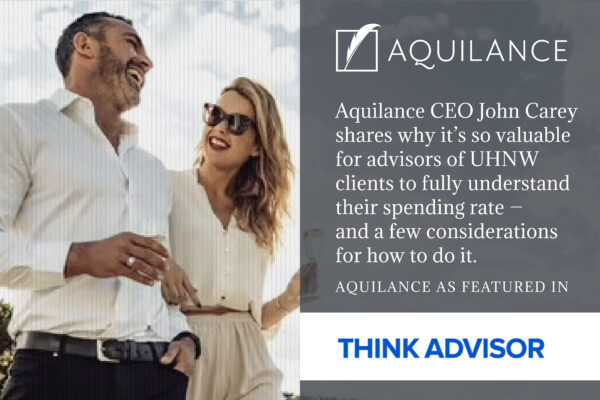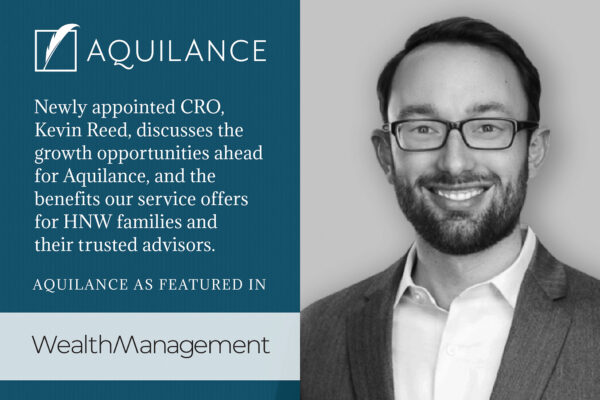From Think Advisor, by John Manganaro
What You Need to Know
- The complexity of some financial pictures means that everyday errors are surprisingly common.
- A big part of the challenge is fostering communication and coordinating responsibilities, explains Aquilance CEO Ken Eyler.
- Eyler says investors of various means face an increasingly complicated financial future as tax laws evolve and markets shift.
Many ultra-high-net-worth individuals and families take great pains to surround themselves with top-tier registered investment advisors, certified public accountants, tax attorneys and other advisors that range from prominent art dealers to high-end insurance agents.
The result is that such families benefit from a tremendous amount of supporting brainpower and technical capabilities to help them protect and make the most of their substantial wealth. But they also face a dizzying diagram of overlapping expertise and shared responsibilities — which can lead to important financial tasks falling through the cracks.
In the experience of Ken Eyler, CEO of Aquilance, this state of affairs means UHNW families are more prone to making potentially costly financial mistakes than people might assume, given their overall level of economic success and prestige.
Given Aquilance’s focus on providing technology that proactively connects and coordinates the work of UHNW families’ various advisory resources, Eyler has significant visibility into this challenge. As such, he says that RIAs can deliver a substantial amount of added value to their UHNW clients by first helping them to see the scope of this coordination challenge and then helping them to solve it.
“Coordinated management is a significant missed opportunity for RIAs and tax advisors,” Eyler recently told ThinkAdvisor.
According to Eyler, advisors who feel they cannot provide this level of service directly for their clients have the opportunity to collaborate with third-party technology providers (including Aquilance) to make this vision a reality — or they can invest the resources to do more of this work on their own.
While leveraging a third party will obviously incur an additional cost for advisors and their ultra-wealthy clients, Eyler says, the potential savings in terms of time and money are tremendous, as is the opportunity for greater peace of mind among clients.
Ultimately, Eyler argues, this type of support service, however it is delivered, can help make critical client relationships “that much more sticky,” helping to ensure that advisors win and keep more clients in the coveted UHNW segment.
Coordination Challenge
As Eyler points out, American families at all wealth levels face challenges in coordinating their recurring and one-time bills. They also struggle to ensure they understand the potential implications of their investment decisions, where they are housing their financial assets, how much liquidity they should maintain, and how much they are spending and saving over the long term.
What is already a complex picture for middle-class and mass affluent families can become completely overwhelming for many UHNW families, who themselves can be split into what Eyler thinks about as several distinct groups.
Some very wealthy families have relatively straightforward balance sheets that resemble those of families lower on the income scale. They just happen to have a lot more wealth overall, which raises the stakes when it comes to avoiding issues and errors.
“Above that level stand those UHNW families with a little more complexity,” Eyler explains. “Maybe they own one or two different successful small- or mid-sized businesses, and so they need an additional layer of visibility into their assets, cash flow and tax burdens.”
Because families in this situation often outsource bill paying and investment management to various trusted advisors, these clients can benefit from tech-backed coordination that helps ensure that each party is proactively (and accurately) notified about recurring responsibilities.
These families also find their levels of liquidity shifting over time in a way that can make paying bills a surprisingly complex process, and it is important to ensure that clients won’t need to liquidate what are meant to be long-term investments in order to cover short-term expenses.
“Above that is another level where the truly complex families are served,” Eyler says. “These are families with a huge amount of wealth tied up across all different sorts of trusts, business entities, ownership groups, etc. The key in this segment is both staying on top of bills and investments but also providing that overall, consolidated financial picture.”
Adding Value in Surprising Places
In Eyler’s experience, it is not uncommon for clients across these segments to share horror stories about long-running mistakes made by an advisor that resulted in outcomes such as houses being put up for sale due to tax delinquency or power being shut off because no one knew who was paying the utility bills.
“In our world, there is a lot of value in what we do because we aren’t just regurgitating information,” Eyler explains. “We are actually looking at the client’s information, and our analytics can check for key things, like has a certain payee changed since the last go around? Has the amount of a recurring bill changed in an unexpected way?”
One time, the firm was able to help a family spot a damaging water leak in their home, because the utility bill had shot up without any other explanation. In another instance, the company noticed that fraud was potentially being committed because the client’s cellphone bill changed unexpectedly and there were unknown lines being added to the account.
“And for those super-complex families that I mentioned, we are actually looking through the trust documents and working with the trustees to make sure everything is going according to plan,” Eyler says. “In other cases, these families get our reports and they are shocked to see how much they are actually spending on things like clothing or dining on a monthly or annual basis.”
Different Means of Adoption
According to Eyler, there are many potential pathways for advisors to incorporate this type of thinking.
“There are some investment advisors who have embedded our process fully into theirs,” Eyler points out. “This group is providing, in my opinion, the best value to their clients, because it is an ongoing, proactive and holistic approach. In other cases, advisors elect to go with more of a third-party handoff approach, if you will.”
This latter approach tends to be useful when advisors are working for a big firm, for example a major bank, that puts significant compliance-based restrictions on communications and data-sharing capabilities.
“Then there are some other RIAs who take a different approach entirely, and they work very closely with us,” Eyler says. “They are in fact the ones who are paying directly for our services, though they may pass the cost through to the client. But in those cases, it is actually the advisor who is our client, and we work very closely with them. We’re happy to take different approaches.”






